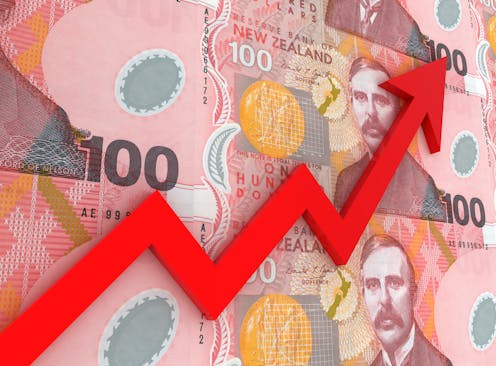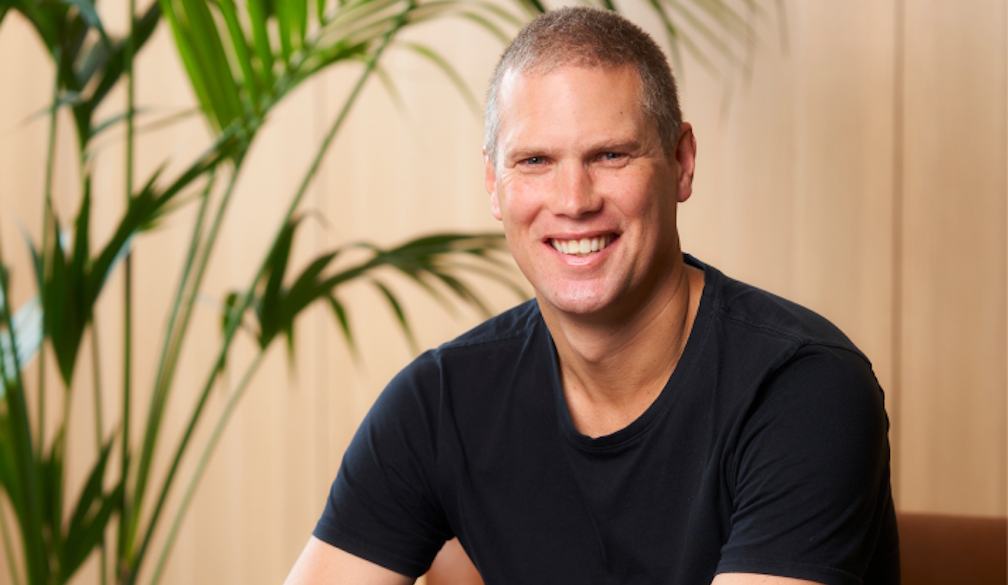Fighting inflation doesn’t directly cause unemployment – but that's still the most likely outcome
- Written by Michael P. Cameron, Associate Professor in Economics, University of Waikato

You may have seen the news: in its attempts to tackle inflation, the Reserve Bank is going to increase unemployment. The idea can even seem to come right from the mouths of experts, including the bank’s governor, Adrian Orr. Speaking recently[1] to an industry conference, he said:
Returning to low inflation will, in the near term, constrain employment growth and lead to a rise in unemployment.
Similar sentiments have been expressed by independent economists[2] and commentators[3].
But is it as simple as it might appear? What is the relationship between inflation and unemployment, and is it inevitable that reducing one will lead to an increase in the other?
Historic highs and lows
Like other developed countries, New Zealand has been going through a period of historically high inflation. The latest figures, for the September quarter of 2022, show an annual rise of 7.2%[4], only slightly lower than the 7.3% recorded for the June quarter.
Inflation is the highest it has been since 1990. The story is similar across the OECD, where inflation averages 10.3%[5], including 8.8%[6] in the UK and 8.2%[7] in the US.
At the same time, New Zealand is experiencing a period of very low unemployment, with a rate of just 3.3%[8] for September 2022, following 3.2% in the June quarter. These are near-record lows, and the rate has not been below 4% since mid-2008.
So, right now New Zealand is in a period of historically low unemployment and historically high inflation. At first glance, that might suggest that in order to return to low inflation, we may inevitably experience higher unemployment.
The Phillips Curve
The idea that inflation and unemployment have a negative relationship (when one increases, the other decreases, and vice versa) dates back to work by New Zealand’s most celebrated economist, A.W. (Bill) Phillips[9].
While working at the London School of Economics in the 1950s, Phillips wrote a famous paper[10] that used UK data from 1861 to 1957 and showed a negative relationship between unemployment and wage increases.
Read more: Orthodox thinking won't cut it: why Mathias Cormann's leadership of the OECD has economists worried[11]
Subsequent work by economics Nobel Prize winners Paul Samuelson[12] and Robert Solow[13] extended Phillips’ work to show a negative relationship between price inflation and unemployment. We now refer to this relationship as the “Phillips Curve”.
However, even though this relationship between inflation and unemployment has been demonstrated with various data sources, and for various time periods for different countries, it is not a causal relationship.
Lower inflation doesn’t by itself cause higher unemployment, even though they are related. To see why, it’s worth thinking about the mechanism that leads to the observed relationship.
Collateral damage
If the Reserve Bank raises the official cash rate, commercial banks follow by raising their interest rates. That makes borrowing more expensive. Higher interest rates mean banks will lend less money. With less money chasing goods and services in the economy, inflation will start to fall.
Of course, this is what the Reserve Bank wants when it raises the cash rate. Its Policy Targets Agreement[14] with the government states that inflation must be kept between 1% and 3%. So when inflation is predicted to be higher, the bank acts to lower it.
Read more: Fed faces twin threats of recession and financial crisis as its inflation fight raises risks of both[15]
At the same time, higher interest rates increase mortgage payments, leaving households and consumers with less discretionary income, and so consumer spending falls. Along with reduced business spending, this reduces the amount of economic activity. Businesses therefore need fewer workers, and so employment falls.
So, while the Reserve Bank raises interest rates to combat inflation, those higher interest rates also slow down the economy and increase unemployment. Higher unemployment is essentially collateral damage arising from reducing inflation.
Great expectations
That’s not the end of the story, though. After its 1960s heyday, the Phillips Curve was criticised by economists on theoretical grounds, and for its inability to explain the “stagflation” (high unemployment and high inflation) experienced in the 1970s.
For example, Milton Friedman[16] argued there is actually no trade-off between inflation and unemployment, because workers and businesses take inflation into account when negotiating employment contracts.
Workers’ and employers’ expectations about future inflation is key. Friedman argued that, because inflation is expected, workers will have already built it into their wage demands, and businesses won’t change the amount of workers they employ.
Friedman’s argument would suggest that, aside from some short-term deviations, the economy will typically snap back to a “natural” rate of unemployment, with an inflation rate that only reflects workers’ and businesses’ expectations.
Read more: Why has the RBA raised interest rates for a record 7th straight month? High inflation – and worse is on the way[17]
Symptom or cause?
Can we rely on this mechanism to avoid higher unemployment as the Reserve Bank increases interest rates to combat inflation?
It seems unlikely. Workers would first have to expect the Reserve Bank’s actions will lower inflation, and respond by asking for smaller wage increases. Right now, however, consumer inflation expectations remain high[18] and wage growth is at record levels[19].
So, we can probably expect unemployment to move upwards as the Reserve Bank’s inflation battle continues. Not because lower inflation causes higher unemployment, but because worker and consumer expectations take time to reflect the likelihood of lower future inflation due to the Reserve Bank’s actions.
And since workers negotiate only infrequently with employers, there is an inevitable lag between inflation expectations changing and this being reflected in wages. Alas, for ordinary households, there is no quick and easy way out of this situation.
References
- ^ Speaking recently (www.nzherald.co.nz)
- ^ independent economists (businessdesk.co.nz)
- ^ commentators (thespinoff.co.nz)
- ^ rise of 7.2% (www.stats.govt.nz)
- ^ 10.3% (www.oecd.org)
- ^ 8.8% (www.ons.gov.uk)
- ^ 8.2% (www.bls.gov)
- ^ rate of just 3.3% (www.stats.govt.nz)
- ^ A.W. (Bill) Phillips (en.wikipedia.org)
- ^ famous paper (onlinelibrary.wiley.com)
- ^ Orthodox thinking won't cut it: why Mathias Cormann's leadership of the OECD has economists worried (theconversation.com)
- ^ Paul Samuelson (www.econlib.org)
- ^ Robert Solow (www.nobelprize.org)
- ^ Policy Targets Agreement (www.parliament.nz)
- ^ Fed faces twin threats of recession and financial crisis as its inflation fight raises risks of both (theconversation.com)
- ^ Milton Friedman (www.econlib.org)
- ^ Why has the RBA raised interest rates for a record 7th straight month? High inflation – and worse is on the way (theconversation.com)
- ^ remain high (www.rbnz.govt.nz)
- ^ record levels (www.nzherald.co.nz)
Authors: Michael P. Cameron, Associate Professor in Economics, University of Waikato







